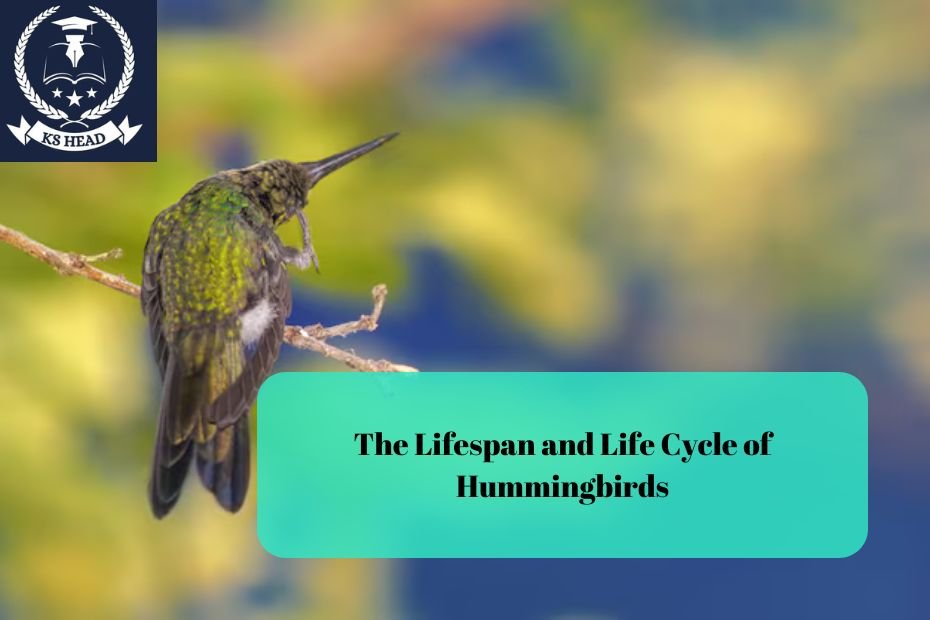Hummingbirds are among the most captivating birds in the world, known for their dazzling colors and unique behaviors. These small, agile creatures are not only visually stunning but also produce a range of sounds that can help enthusiasts and researchers identify different species. This article will guide you through the process of identifying hummingbird species by their colors and sounds, allowing you to appreciate these remarkable birds even more.
The Importance of Color in Hummingbird Identification
Color is one of the primary traits used to identify hummingbird species. Their vibrant plumage can vary widely not only between species but also within the same species based on factors like age, gender, and even geographic location. Here are some of the most common color characteristics to look for:
1. Iridescence
Hummingbirds possess iridescent feathers that can change color depending on the angle of the light. This iridescence is due to microscopic structures in the feathers that reflect light in different ways. For example:
- Ruby-throated Hummingbird: Males display a striking ruby-red throat that can appear dark from some angles.
- Anna’s Hummingbird: Males have a beautiful emerald-green back and a vibrant magenta crown and throat.
2. Gender Differences
In many hummingbird species, males are typically more colorful than females. This difference often helps with identification:
- Black-chinned Hummingbird: Males exhibit a glossy black throat, while females have a more subdued appearance with less iridescence.
- Broad-tailed Hummingbird: Males are known for their bright green backs, while females have a more muted coloration.
3. Regional Variations
Hummingbirds can have variations in color based on their geographic location. For example:
- Rufous Hummingbird: While typically orange and rust-colored, their shade can differ based on where they are found, ranging from bright orange in the West to more muted tones in the East.
Understanding Hummingbird Sounds
In addition to colors, the sounds made by hummingbirds can provide important clues for identification. Their vocalizations vary from species to species and can include:
1. Chirps and Twitters
Many hummingbirds communicate through a series of chirps and twitters. These sounds can indicate territoriality or courtship behavior. For instance:
- Calliope Hummingbird: Known for its high-pitched chirps, the Calliope is one of the smallest hummingbirds in North America and has a distinctive melodic quality to its calls.
2. Buzzing Sounds
Hummingbirds often produce buzzing sounds, especially when they are in flight. These sounds can help distinguish between species:
- Costa’s Hummingbird: This species produces a loud buzzing sound, especially when performing aerial displays, which can be used to attract females.
3. Chatter and Song
Some hummingbirds have more complex vocalizations that can resemble songs. For example:
- Anna’s Hummingbird: Males are known to sing a series of notes, which can sound like a soft trill or warble. This song is particularly prominent during the breeding season.
Key Hummingbird Species and Their Identifying Features
To better understand how to identify hummingbird species by their colors and sounds, let’s explore some key species found in North America.
1. Ruby-throated Hummingbird (Archilochus colubris)
- Color: Males have a bright ruby-red throat, green back, and white underparts. Females are less colorful, with a more muted throat.
- Sound: Their call is a sharp “chip” sound, often heard during territorial displays.
2. Rufous Hummingbird (Selasphorus rufus)
- Color: Males are predominantly orange and rust-colored, while females have more green and white.
- Sound: They produce a series of high-pitched chirps that can sound like a rapid series of “cheeps.”
3. Anna’s Hummingbird (Calypte anna)
- Color: Males feature a bright emerald green back and a magenta throat, while females have a more subdued coloration.
- Sound: Their song consists of a series of trills and chirps, often heard during courtship.
4. Black-chinned Hummingbird (Archilochus alexandri)
- Color: Males are recognized by their glossy black throat and green back; females have more subdued colors with white underparts.
- Sound: Their vocalizations are a series of rapid, high-pitched notes, often associated with aggressive behavior.
5. Broad-tailed Hummingbird (Selasphorus platycercus)
- Color: Males are bright green above and have a reddish-pink throat, while females are more brownish.
- Sound: They produce a distinct whistle during flight, which can be described as a “zinging” sound.
Habitat and Behavior Insights
Understanding the habitat preferences and behaviors of different hummingbird species can also aid in identification. Most hummingbirds are found in areas with abundant flowering plants, as they primarily feed on nectar. Here are some insights:
1. Feeding Habits
Hummingbirds have long, specialized bills that allow them to access nectar deep within flowers. When observing these birds, pay attention to:
- Flower Preferences: Different species may favor specific types of flowers. For example, the Rufous Hummingbird is often attracted to tubular flowers, while the Anna’s Hummingbird is drawn to a variety of blooms.
2. Territorial Behavior
Many hummingbirds are territorial, particularly males during the breeding season. They will defend their feeding territories vigorously:
- Displays: Males often perform aerial displays, showcasing their vibrant plumage while emitting distinctive sounds to establish dominance.
3. Migration Patterns
Some hummingbird species migrate long distances, while others are more sedentary. Understanding migration patterns can also assist in identification:
- Ruby-throated Hummingbird: Known for its impressive migration from North America to Central America, this species can be identified by its arrival in spring and departure in the fall.
Tips for Observing and Identifying Hummingbirds
- Use Binoculars: A good pair of binoculars can enhance your ability to see colors and details that might not be visible to the naked eye.
- Listen Carefully: Pay attention to the sounds hummingbirds make. Being able to recognize their calls and songs can significantly aid in identification.
- Study Local Species: Familiarize yourself with the hummingbirds native to your region. This knowledge can help you quickly identify the species you encounter.
- Observe Feeding Behavior: Watching how hummingbirds feed can provide insight into their species. Some may hover in front of flowers, while others may perch nearby.
- Document Your Findings: Keep a journal or use a bird identification app to track the hummingbirds you observe. Note their colors, sounds, and behaviors for future reference.
Conclusion
Identifying hummingbird species by their colors and sounds is not only an exciting challenge for birdwatchers but also a rewarding way to connect with nature. By paying attention to the vibrant colors of their plumage and the unique sounds they produce, you can enhance your birdwatching experience. Whether you are in your backyard or exploring natural habitats, the captivating world of hummingbirds awaits you.
FAQs
- What is the most common hummingbird species in North America?
- The Ruby-throated Hummingbird is the most common species in North America, especially east of the Rocky Mountains.
- How can I attract hummingbirds to my yard?
- Planting native flowering plants and using hummingbird feeders filled with a sugar-water solution can attract these birds.
- Do hummingbirds migrate?
- Yes, many species, like the Ruby-throated Hummingbird, migrate long distances between their breeding and wintering grounds.
- What sounds do hummingbirds make?
- Hummingbirds produce a range of sounds, including chirps, twitters, and buzzing noises, depending on the species.
- How can I identify a hummingbird if I only see it briefly?
- Note the color of the feathers and any distinctive markings, as well as the sound it makes, to help with identification later.

